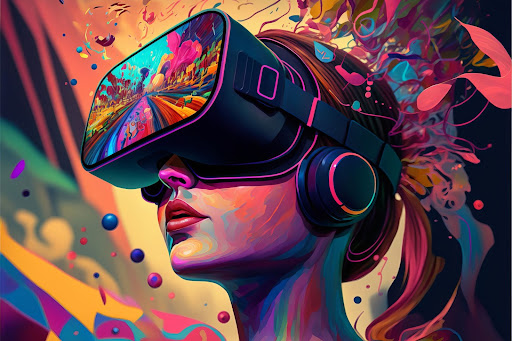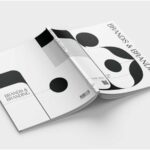By Elmarie Harrington
1. AI-generated art
The buzzword on everyone’s lips is artificial intelligence (AI), which is shaking up the design world as much as it is making waves in content creation and web development.
While AI-generated art has been around since at least 2018, when the Portrait of Edmond de Belamy, created using a machine-learning algorithm, sold at Christie’s auction house for $432 500, it’s now hit the mainstream.
We’ve seen a lot of movie posters and other design elements created using AI, which some say imbue artworks with a sense of mystique and utopianism.
2. Large fonts
Also taking the web by storm are large fonts, which bring a playfulness to design, and especially website design. Often, you’ll see fonts on websites that are dynamically moving and changing. We’re not talking about just the chief image, either: large fonts are everywhere.
In fact, designers are having so much fun with fonts that our next trend is also related to typefaces.
3. Custom and serif fonts
Fonts are at the forefront of 2023’s design trends, and the trend towards custom fonts – especially in logo design – continues within the larger trend towards playfulness in design.
Also, we seem to be leaving sans-serif fonts in the dust as serif fonts (with decorative strokes attached to the letters) take over. Used cleverly, fonts that have serifs can have an ironic edge to them that creates a playful and approachable vibe.
4. 3D design
More playfulness! This is a trend we have seen emerging as a result of the ever-increasing versatility of design programmes. Giving a three-dimensional (3D) aspect to design allows the viewer to get a better impression of the volume and shape of a product.
That said, it seems the way in which designers are giving a 3D edge to images has become a bit simpler, with fewer shading effects, than when this trend first emerged.
5. Simple, geometric shapes
The modern incorporation of simple, geometric shapes in design references the Bauhaus design principles that emerged in the early part of the 20th Century.
The Bauhaus movement is famous for its approach to design, which typically embraced the abstract and eschewed sentimentality.
6. Mockups
The days when designers had to make their own mockups of images and items are long gone. These days we have at our fingertips programmes such as Adobe XD, InVision and FluidUI that can do this for us, and we’re using them a lot, in product design and even when finessing the look of a business card, for example.
These programmes allow us to show our clients what their final products will look like, quickly and easily.
7 – Motion
It’s not news that there’s a high demand for video, or that this demand is growing. This is a trend that is just not going away.
But this move to motion isn’t just about videos, short or long, it’s about adding even a little movement to images, so that they catch the eye. The great thing about this trend, as used in GIFs (graphics interchange format images), is that they can be created on a very small budget.
8. Flat design
Yes, 3D design and adding movement to images are big trends, but it also looks like there’s a switch, in some cases, to “quiet” design that doesn’t fight for attention with everything else that is beeping and jiggling.
Not only do static images load more easily, but flat design (such as line drawings with no shadowing or gradient) can call attention to itself by its very stillness.
Design plays a crucial role in shaping our environment, and effective design can make a product or service more efficient and user friendly, leading to increased customer satisfaction and loyalty, so it really is worth having products and the images that sell them designed by a professional.
Elmarie Harrington is head of graphic design at Flow Communications, one of South Africa’s leading independent agencies. Founded in 2005, Flow now has a permanent team of more than 65 professional staff, working remotely across South Africa.
- MRF Unveils Latest MAPS® Data - 20th February 2025
- The BRC announces changes to the board and updates for 2025 - 17th December 2024
- Top 50 DSTV TV programmes – October 2024 - 12th November 2024






